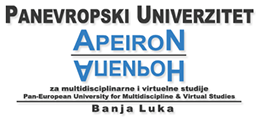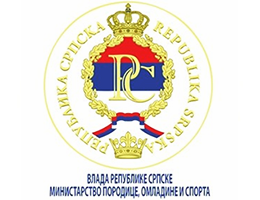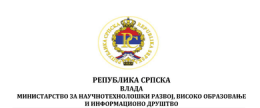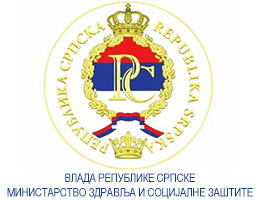Physical Conditioning Training in the Light of the Latest Scientific Knowledge
Volume 5, Issue 1 (2015)
Volume 5, Issue 1 (2015)
Physical Conditioning Training in the Light of the Latest Scientific Knowledge
Abstract:
A man has always been aware that more physical activities, together with optimality of other parameters such as leisure and nutrition, bring him supremacy over other members of his wider community. This was primarily linked to the skills in hunting and warfare. On the other side, in times of peace and abundance, a man's aboriginal need for an boastfulness and dominance over other people around him will be demonstrated in various shapes of competitions in the area of man's physical capacities, a strength and speed first of all. The knowledge about the possibility of the increase of these capacities by practicing of different shapes of a physical activity, namely an exercising, attained in the previous periods, will start to be applied in an organized manner. First of all, it will occur in military structures, and then as a part of events recognised as the very beginnings of what sport today is. Which is the latest knowledge about that?
Keywords:
physical conditioning, miror neurons, genomics
Full Text:
References:
- Bouchard, C., Hoffman, E. (2011). The Encyclopaedia of Sports Medicine: An IOC Medical Commission Publication, Volume XVIII, Genetic and Molecular Aspects of Sports Performance. Blackwell Publishing Ltd.
- Bray, M.S., Hagberg, J.M., Pérusse, L., Rankinen T., Roth, S.M., Wolfarth, B. & Bouchard, C. (2009). The human gene map for performance and health-related fitness phenotypes: The 2006-2007 update. Medical Science of Sports and Exercise, 41, 35-73.
- Buccino, G., Vogt, S., Ritzl, A., Fink, G.R., Zilles, K., Freund, H.J., & Rizzolatti, G. (2004). Neural circuits underlying imitation learning of hand actions: an event-related fMRI study, Neuron, 42, 323-334.
- Buccino, G. and Riggio, L. (2006). The Role of the Mirror Neuron System in Motor Learning. Kinesiology, 38(1), 5-15.
- Cochin, S., Barthelemy, C., Roux, S., & Martineau, J. (1999). Observation and execution of movement: similarities demonstrated by quantified electroencephalography. European Journal of Neuroscience, 11, 1839-1842.
- Culver K. W. et al. (2002): Genomics. In Robinson R. (Ed.) Genetics. Macmillan Science Library. Macmillan Reference USA.
- Čustonja, Z. i Jajčević, Z. (2003). Pregled razvoja kondicijske pripreme. U D. Milanović i I. Jukić (Ur.) Kondicijska priprema sportaša, Zbornik radova međunarodno znanstveno – stručnog skupa, Zagreb, 21- 22. 2. 2003. (str. 33-40). Zagreb: Kineziološki fakultet Sveučilišta u Zagrebu, Zagrebački športski savez.
- De Moor, M. H., Spector, T. D., Cherkas, L. F., Falchi, M., Hottenga, J. J., Boomsma, D. I., et al. (2007). Genome-wide linkage scan for athlete status in 700 British female DZ twin pairs. Twin Research and Human Genetics, 10(6), 812–820.
- Fadiga, L., Fogassi, L., Pavesi, G., & Rizzolatti, G. (1995). Motor facilitation during action observation: a magnetic stimulation study. Journal of Neurophysiology, 73, 2608-2611.
- Filostrat, L.F. (1928). O trenerskoj nauci (prevod Bora Jovanović). Budapest: Stephaneum.
- Gallese, V., Fadiga, L., Fogassi, L., & Rizzolatti, G. (1996). Action recognition in the premotor cortex. Brain, 119, 593-609.
- Gangitano, M., Mottaghy, F.M., & Pascual-Leone, A. (2001). Phase-specific modulation of cortical motor output during movement observation. Neuroreport, 12, 1489-1492.
- Hari, R., Forss, N., Avikainen, S., Kirveskari, E., Salenius, S., & Rizzolatti, G. (1998). Activation of human primary motor cortex during action observation: a neuromagnetic study. Proceedings of National Academy of Science USA, 95, 15061-15065.
- Jeannerod, M. (1994). The representing brain: neural correlates of motor intention and imagery. Behavioral Brain Research, 17, 187-245.
- Koehler, E., Keysers, C., Umilta’, M.A., Fogassi, L., Gallese, V., & Rizzolatti, G. (2002). Hearing sounds, understanding actions: action representation in mirror neurons. Science, 297, 846-848.
- Kreamer, W., Hakkinen, K. (2002). Strength Training for Sport. Blacwell Science Ltd.
- Lippi G., Longo, U., Maffulli, N. (2010). Genetics in sport. British Medical Bulletin, 93, 27-47.
- Malacko, J., i Doder, D. (2008). Tehnologija sportskog treninga i oporavka. Pokrajinski sekretarijat za sport i omladinu, Sportski savez Vojvodine.
- Ostojić, M.S., Calleja – Gonzalez, J., Jukić, I. (2013). Genomika u sportu: Ultimativna dijagnostika XXI stoljeća? U I. Jukić, C. Gregov, S. Šalaj, L. Milanović i Wertheimer, V (Ur.) Kondicijska priprema sportaša, Zbornik radova međunarodno znanstveno – stručnog skupa, Zagreb, 22- 23. 2. 2013. (str. 19-20). Zagreb: Kineziološki fakultet Sveučilišta u Zagrebu, Zagrebački športski savez.
- Pitsiladis, Y., Wang, G., Wolfarth, B., Scott, R., et al. (2013). Genomics of elite sporting performance: what little we know and necessary advances. British Journal of Sports Medicine, 47(9), 550–555.
- Rizzolatti, G., Camarda, R., Fogassi, L., Gentilucci, M., Luppino, G., & Matelli, M. (1988). Functional organization of inferior area 6 in the macaque monkey: II. Area F5 and the control of distal movements. Experimental Brain Research, 71, 491-507.
- Rizzolatti, G., Fadiga, L., Gallese, V., & Fogassi, L. (1996). Premotor cortex and the recognition of motor actions. Cognitive Brain Research, 3, 131-141.
- Roth, S.M., Rankinen, T., Hagberg, J.M., Loss, R.J., Pérusse, L., Sarzynski, M.A., Wolfarth, B. & Bouchar, C. (2012). Advances in exercise, fitness, and performance genomics in 2011. Medicine and Science in Sport and Exercise, 44(5), 809-817.
- Šalaj, S. i Brusač, M. (2013). Genetska istraživanja u sportu: Rezultati i primjena u selekciji sportaša. Kondicijski trening, 11(1), 7-13.
- Strafella, A., & Paus, T. (2000). Modulation of cortical exitability during action observation: a transcranial magnetic stimulation study. Neuroreport, 11, 2289-2292.
- Swan, M. (2012). Applied genomics: personalized interpretation of athletic performance genetic association data for sports performance capability and injury reduction. The Journal of Bioscience and Medicine, 2(1), 1-10.
- Todd, T. (1985). The myth of muscle-bound lifter. NSCA Journal. 7(3), 37-41.
- Tremblay, C., Robert, M., Pascual-Leone, A., Lepore, F., Nguyen, D.K., Carmant, L., Bouthillier, A., & Theoret, H. (2004). Action observation and execution: intracranial recordings in a human subject. Neurology, 63, 937-938.
- Umilta’, M.A., Koelher, E., Gallese, V., Fogassi, L., Fadiga, L., Keysers, C., & Rizzolatti, G. (2001). I know what you are doing: a neurophysiological study. Neuron, 31, 155-165.
- Wagner, J.K., Royal, C.D. (2012). Field of Genes: An Investigation of Sports-Related Genetic Testing. Journal of Personalized Medicine, 2(3), 119-137.
- Williams, A.G., Folland, J.P. (2008). Similarity of polygenic profiles limits the potential for elite human physical performance.Journal of Physiology,586(1), 113-21.






